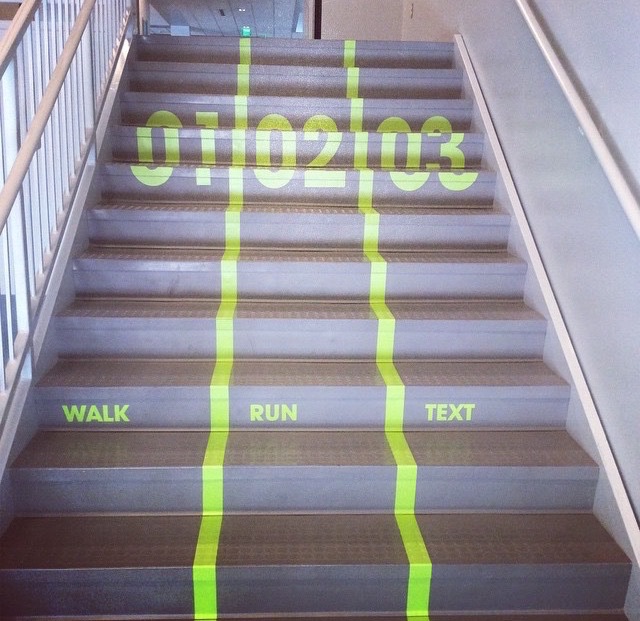A guy walks into a bar. Ouch.
Corny jokes aside, what are the odds that the guy was looking at his cell phone while walking? According to the National Safety Council, the odds are pretty good. The injury count for distracted walking is significantly higher than distracted driving. “The rise in cell phone distracted walking injuries parallels the eight-fold increase in cell phone use in the last 15 years,” the NSC notes.
The reason people become complacent while walking is a simple one. Because we all take thousands of steps per day without getting hurt, our risk perception gets skewed, and as this guide on slips, trips and falls points out, that can have serious consequences, as tripping over your own feet (or walking into a bar) can lead to major injuries.
Despite campaigns on the perils of using cellphones while walking or driving, organizations are still finding it extremely challenging to cut down on people moving while distracted. A number of innovative solutions have been proposed, including Utah Valley University going as far as painting lanes on their stairs. It was obviously meant in jest, but it highlights how pervasive of an issue this is—and how difficult it can be to solve.

The issue of distraction is a lot bigger than just cellphones, and one popular solution is to recalibrate people’s risk perception and understanding of human factors. Human factors training provides increased personal awareness and critical safety skills to help people recognize and avoid risk-elevating behavior like distracted walking. It’s widely applicable to industry and educational settings alike. It’s also an easy option to investigate—check out our free on-demand distraction webinar.
